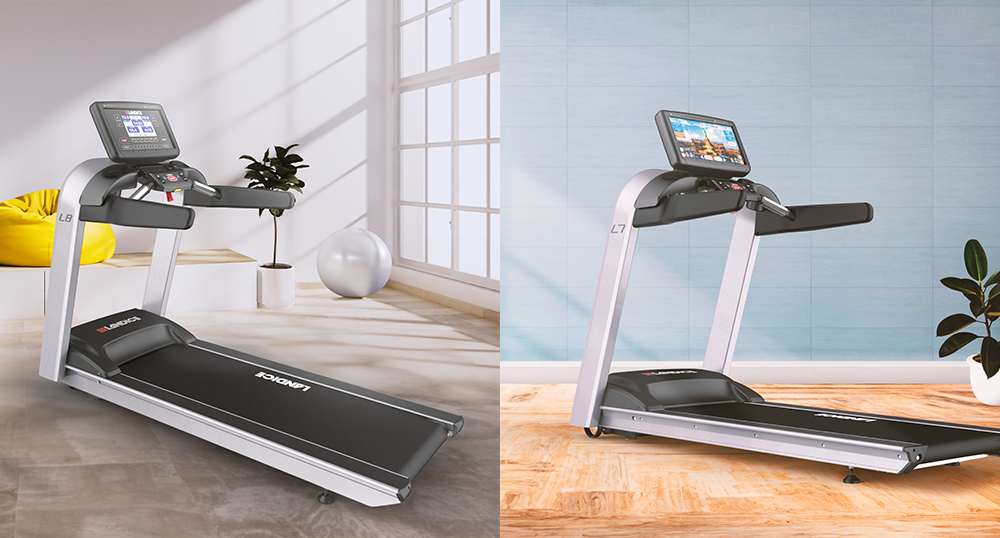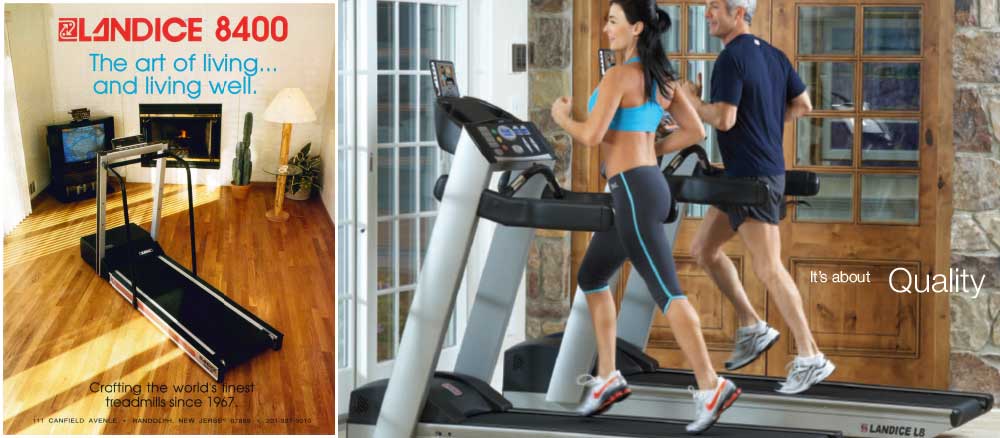These 6 Tips Will Make You Love Your Next Pair Of Running Shoes
February 28, 2018
Buying a pair of running shoes that meet the needs of your feet is as important as getting the right treadmill to fit your running needs. Some runners are too concerned with shoe fashion rather than shoe fit. Often, we choose a shoe that looks cool, but end up finding that it hurts our foot and pocketbook.
With these tips, you'll find the 6 major things to consider when buying one of your most important pieces of fitness equipment. Read on. Your feet will thank you.
1. Don't Be a Heel
Your heel should fit snug, but not tight. You should be able to slide your feet out. Lacing your shoes up through the final eyelet minimizes slippage. There will be some heel movement, but it shouldn’t be uncomfortable. Any irritation you feel in the store will be amplified once you hit the road or treadmill.
Find out why the Landice L8 is considered 'ninja quiet'
2. Note the Instep
A shoe’s upper should feel snug and secure around your instep. If you feel pressure and tightness, this means you need more space. As a workaround you can try alternative lacing techniques to see if this helps loosen up things.
3. What's with the Width?
Your foot should be able to move side-to-side in the shoe’s forefoot without crossing over the edge of the insole. You should be able to pinch a quarter inch of upper material along the widest part of your foot. If the shoe is too narrow, you’ll feel the base of your little toe sitting on the edge of the shoe last.
4. Length Matters
Feet swell and lengthen over a run, so make sure there’s a thumb’s width of space between your longest toe (which isn’t always the big toe) and the end of a shoe. To measure this stand with your shoes laced up and have someone press their thumb down on the shoe's front. Your toes should also wiggle freely up and down. Wiggle room protects against front-of-the-foot issues.
5. How Flexible Are You?
Check the flex point before you put on the shoe. You can do this by holding the heel and pressing the tip of the shoe into the floor. The shoe should bend and crease along the same line your foot flexes. An improperly aligned flex point can lead to arch pain or plantar fasciitis, while a lack of flexibility leads to achilles-tendon or calf strain.
6. That Good Feeling
Knowing your arch type or running mechanics isn’t the whole story. You still need to pinpoint shoes that match your foot’s contours and movements. Take your shoes for a quick jog, either on a store’s treadmill, on the sidewalk, or down a hallway. A natural-feeling support under the arch works for most people. Back off the amount of support if you feel your arch cramping. Your shoe should complement and support your stride, not try to alter it. The phrase, "fits like a glove" applies here.
.png?width=258&height=54&name=Landice_logo%20(1).png)




